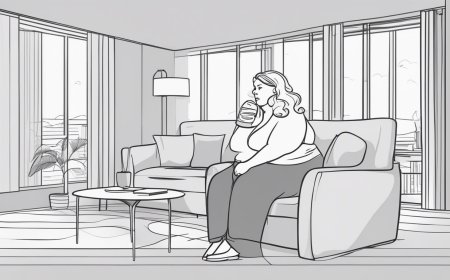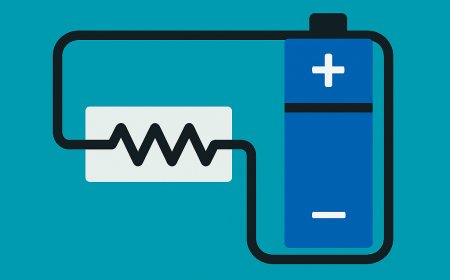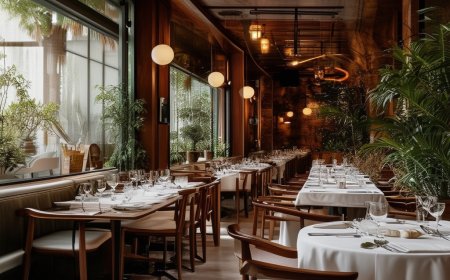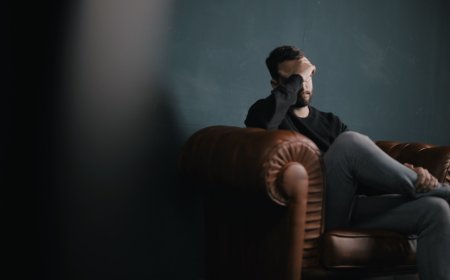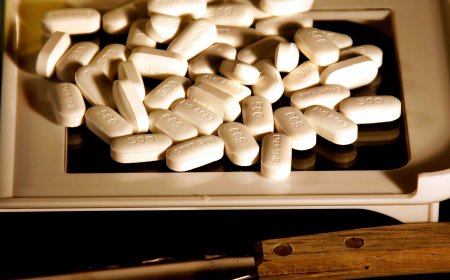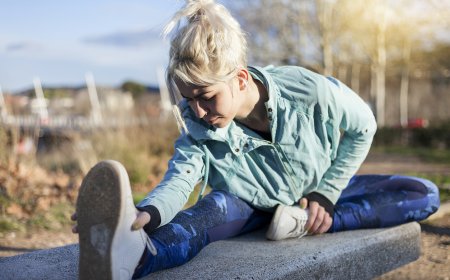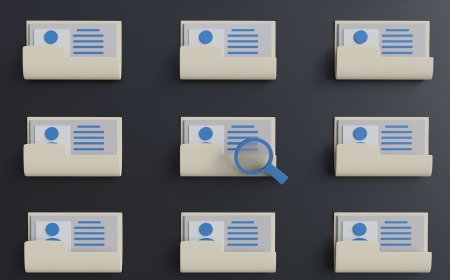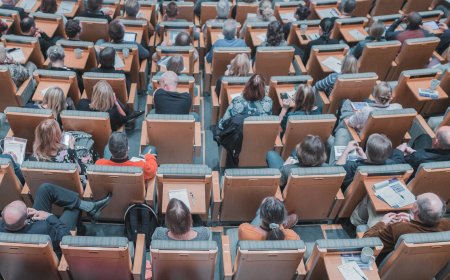The ABC of Reproduction: Everything You Need to Know About the Human Reproductive System
Uncover the mysteries of the human reproductive system in our comprehensive guide. From reproductive anatomy to fertility basics, this article is your gateway to understanding reproduction. Dive in now and upgrade your knowledge!

Understanding the human reproductive system is key to understanding our existence and continuity as a species. It is quite an intricate system with numerous parts working in harmony to achieve one critical function - reproduction. This article aims to shed light on the various aspects of the human reproductive system, providing an in-depth look into both the male and female reproductive systems, reproductive health, reproductive anatomy, fertility basics, and hormones involved in reproduction.
Section 1: The Role of the Reproductive System
The primary function of the reproductive system is to ensure survival of the species. Other systems in the body, such as the endocrine and urinary systems, work continuously to maintain homeostasis for survival of the individual. An individual may live a long, healthy, and happy life without producing offspring, but if the species is to continue, at least some individuals must produce offspring.
The reproductive system has four distinctive functions:
- Production of egg and sperm cells (gametes)
- Transportation and sustenance of these cells
- Nurturing of the developing offspring
- Production of hormones
The last function is particularly crucial as these hormones play a key role in the maturation of the reproductive system, the development of sexual characteristics, and regulation of the normal physiology of the reproductive system.
Section 2: Primary and Secondary Reproductive Organs
The reproductive system is divided into primary and secondary organs. The primary reproductive organs, or gonads, consist of the ovaries in females and testes in males. These organs are responsible for producing the egg and sperm cells (gametes), and hormones.
On the other hand, all other organs, ducts, and glands in the reproductive system are considered secondary, or accessory, reproductive organs. These structures transport and sustain the gametes and nurture the developing offspring.
Section 3: The Male Reproductive System
The male reproductive system is built to produce, nourish, and transport sperm, the male gametes, which are essential for reproduction. The system includes both internal and external organs that work together to ensure the successful production and delivery of sperm.
Subsection 3.1: Anatomy of the Male Reproductive System
The male reproductive system consists of the testes and a series of ducts and glands. Sperm are produced in the testes and are transported through the reproductive ducts. These ducts include the epididymis, vas deferens, ejaculatory duct, and urethra. The reproductive glands produce secretions that become part of semen, the fluid that is ejaculated from the urethra. These glands include the seminal vesicles, prostate gland, and bulbourethral glands.

Subsection 3.1.1: Key Components of the Male Reproductive System
| Structure | Location & Description | Function |
|---|---|---|
| Bulbourethral glands (2) | Pea-sized organs posterior to the prostate on either side of the urethra. | Secretion of gelatinous seminal fluid called pre-ejaculate. This fluid helps to lubricate the urethra for spermatozoa to pass through, and to help flush out any residual urine or foreign matter. |
| Epididymis | Tightly coiled duct lying just outside each testis connecting efferent ducts to vas deferens. | Storage and maturation of sperm. |
| Penis | Three columns of erectile tissue: two corpora cavernosa and one corpus spongiosum. Urethra passes through the penis. | Male reproductive organ and also the male organ of urination. |
| Prostate gland | Surrounds the urethra just below the urinary bladder. | Stores and secretes a clear, slightly alkaline fluid constituting up to one-third of the volume of semen. Raises vaginal pH. |
| Seminal vesicles (2) | Convoluted structure attached to vas deferens near the base of the urinary bladder. | About 65-75% of the seminal fluid in humans originates from the seminal vesicles. They contain proteins, enzymes, fructose, mucus, vitamin C, flavins, phosphorylcholine, and prostaglandins. High fructose concentrations provide nutrient energy for the spermatozoa as they travel through the female reproductive system. |
| Testes | Inside the scrotum, outside of the body. | Gonads that produce sperm and male sex hormones. They are responsible for the production of testosterone by cells of Leydig in the testicles. |
| Urethra | Connects the bladder to the outside body. | Tubular structure that receives urine from the bladder and carries it to the outside of the body. It also serves as a passage for sperm. |
| Vas deferens | Muscular tubes connecting the left and right epididymis to the ejaculatory ducts to move sperm. | During ejaculation, the smooth muscle in the vas deferens wall contracts, propelling sperm forward. Sperm are transferred from the vas deferens into the urethra, collecting fluids from accessory sex glands en route. |
Section 4: The Female Reproductive System
The female reproductive system plays a pivotal role in the reproductive process. Not only does it produce the female gamete, the egg or ovum, but it also provides the environment necessary for fertilization and development of the offspring.
Subsection 4.1: Anatomy of the Female Reproductive System
The female reproductive system, entirely housed within the pelvis, includes several key components: the ovaries, fallopian tubes, uterus, vagina, and vulva. Each plays a unique role in the processes of ovulation, fertilization, pregnancy, and childbirth.

Subsection 4.1.1: Key Functions of the Female Reproductive System
The female reproductive system is designed to carry out several functions:
- Produces eggs (ova)
- Secretes sex hormones
- Receives the male spermatozoa during sexual intercourse
- Protects and nourishes the fertilized egg until it is fully developed
- Delivers the fetus through the birth canal during childbirth
- Provides nourishment to the baby through milk secreted by mammary glands in the breast
Subsection 4.1.2: Key Components of the Female Reproductive System
| Structure | Location & Description | Function |
|---|---|---|
| Ovaries (2) | Ovoid structures on either side of the uterus in the pelvic cavity. | Primary sex organs of the female. They contain ovarian follicles that contain the oocytes. Oocytes are released during the ovulation stage of the menstrual cycle. |
| Fallopian Tubes (2) | Extend from lateral areas of the uterus to near the ovaries. | Transport oocyte to the uterus after fertilization and are the sites where fertilization by sperm actually occurs. |
| Uterus | Pear-shaped structure divided into the fundus and the cervix. | Site of fetal development during gestation. |
| Vagina | Located between the rectum and urethra. It is a smooth muscle lined with an epithelial mucous membrane. | Path for menstrual blood and tissue to leave the body, as well as the fetus during childbirth. Produces a variety of secretions for lubrication and receives secretions that facilitate fertilization. |
| Vulva | Externally located: labia majora and minora, mons pubis, clitoris, vestibule, greater and lesser vestibular glands. | Sexual function: heavily innervated and provide pleasure when properly stimulated. |
| Perineum | Area between the vagina and anus. | Helps form the muscular floor of the pelvis; can be torn during vaginal childbirth. |
| Mammary glands | Superficial to the pectoral muscles. | Provide nourishment to the baby through milk secretions. |
Section 5: Comparing the Male and Female Reproductive Systems
Subsection 5.1: Similarities
The male and female reproductive systems share some fundamental similarities. Most of the reproductive organs of both sexes develop from similar embryonic tissue, meaning they are homologous. Both systems have gonads that produce gametes (sperm and egg or ovum) and secrete sex hormones. Furthermore, both systems experience maturation of their reproductive organs, which become functional during puberty due to the secretion of these sex hormones.
Subsection 5.2: Differences
The differences between the male and female reproductive systems primarily lie in their distinctive roles in the reproduction cycle. A healthy, sexually mature male continuously produces sperm. On the other hand, the development of a female’s "eggs" or oocytes is arrested during fetal development. This means that females are born with a predetermined number of oocytes and cannot produce new ones.
Section 6: The Reproductive Health and Fertility Basics
Reproductive health and fertility are fundamental to understanding the human reproductive system. They encompass the state of physical, mental, and social health in all matters relating to the reproductive system. It also implies that people are able to have a satisfying and safe sex life, the capability to reproduce, and the freedom to decide if, when, and how often to do so.
The fertility of an individual refers to their ability to reproduce naturally. For men, this implies the ability to produce healthy sperm in adequate quantities to fertilize an egg. For women, it refers to the ability to produce a viable egg and provide an environment conducive to its fertilization and subsequent development into a fetus.
Section 7: Reproductive Hormones
Reproductive hormones play a critical role in the functioning of the reproductive system. They regulate the maturation of the reproductive system, the development of sexual characteristics, and the normal physiology of the reproductive system. In males, testosterone is produced in the testes and is responsible for the development of secondary sexual characteristics and sperm production. In females, estrogen and progesterone, produced in the ovaries, control the menstrual cycle, prepare the uterus for implantation of a fertilized egg, and maintain pregnancy.
Section 8: Understanding Reproduction and Sexual Health
Understanding reproduction and sexual health is crucial for individuals and couples planning to start a family. It provides them with the knowledge to make informed decisions about family planning, prevents sexually transmitted infections, and promotes overall reproductive well-being.
Section 9: Reproduction Explained
Reproduction is the process by which organisms create descendants. This is a characteristic that all living things share and sets them apart from nonliving things. In human reproduction, two kinds of sex cells or gametes are involved. The sperm, the male gamete, and a secondary oocyte, the female gamete, must meet in the female reproductive system to create a new individual.
Section 10: Conclusion
To sum up, the human reproductive system is a marvel of nature's design. It is a complex network of organs and structures designed to carry out the process of reproduction, ensuring the continuation of our species. Understanding how it functions, the role of each component, and the importance of reproductive health and hormones, can help individuals and couples make informed decisions related to family planning and sexual health.
This article provided a comprehensive overview of the human reproductive system, highlighting the key components and functions of both the male and female reproductive systems. It also touched upon the importance of reproductive health, fertility basics, the role of hormones in reproduction, and an understanding of reproduction in general. In the end, a good understanding of one's own reproductive system can lead to better health decisions and a healthier life.
Remember, it's crucial to consult with healthcare professionals for personalized advice and treatment related to reproductive health. This information is intended to enhance understanding of the human reproductive system and should not replace professional medical advice.
Disclaimer: The image(s) featured in this article are for illustrative purposes only and may not directly depict the specific concepts, situations, or individuals discussed in the content. Their purpose is to enhance the reader's understanding and visual experience. Please do not interpret the images as literal representations of the topics addressed.
What's Your Reaction?











